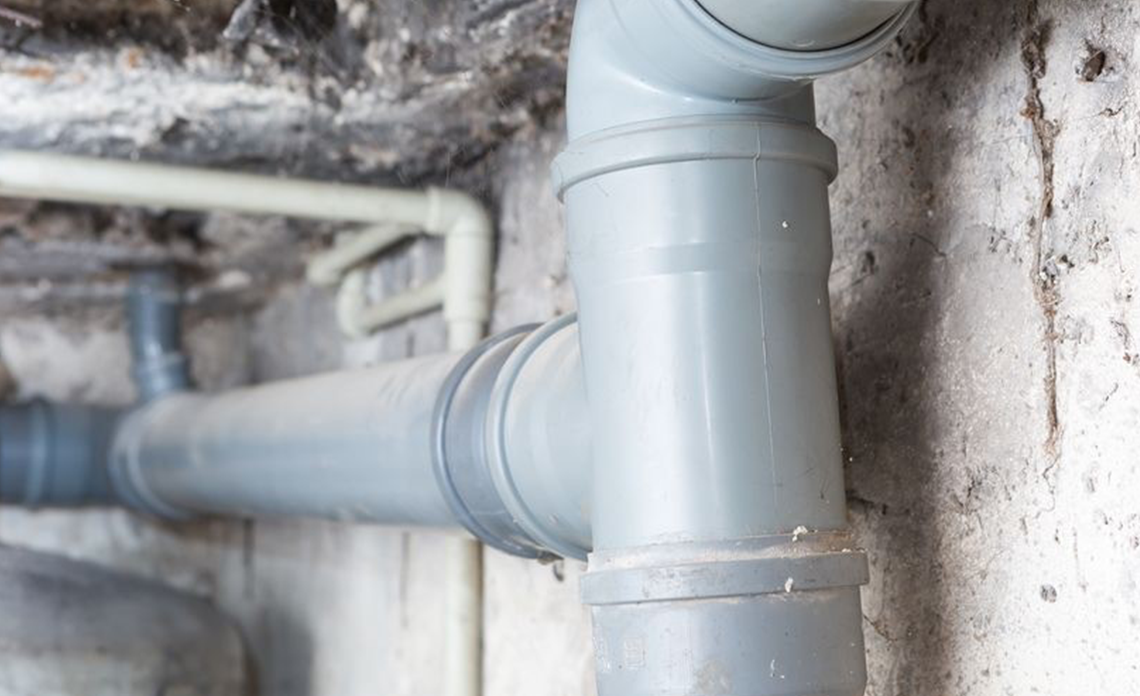Hydro (water) Static (not moving) simply means “standing water”. This means the test does not use high pressure. Unlike testing gas cylinders or boilers, the only “pressure” on your drain system is that from gravity of the water in the drain. The hydrostatic sewer line inspection cannot cause a leak. It can only detect a leak.
A hydrostatic sewer line inspection is a test of the working conditions of a plumbing system. It’s like having a car you are planning to buy inspected by a qualified mechanic to see if there are any significant problems that need corrected before you buy it. Whether you are a buyer, seller, or just doing it for your own home, this test is done for peace of mind of “knowing” rather than “hoping” there are no problems with the pipes in the plumbing system.
Here’s how it works: A small inflatable ball is sent down the drain, positioned by a camera, and inflated just enough to block water flow. Then, you pour water down the drain until the drain is full. The water level is carefully measured. Then you wait for a little while to see if the water level holds, or if it drops. If it drops, you have a leak somewhere. The ball is repositioned to different areas to isolate which sewer line has a problem and where. A sensitive electronic sonar locating beacon device is inserted into the suspect area to accurately pinpoint the problem area. The camera can inspect the problem is so that the best repair solution can be determined. This assures that the repair will be only what is necessary and at minimal disturbance to your home and at minimal cost to you.
Why Not Just Use a Sewer Line Camera?
Keep in mind what we are looking at. Your sewer lines are going to be coated with “gunk”. This debris can hide a crack or could look like a crack but is just a crack in the debris and not the pipe. To avoid false indications, it is necessary to do the hydrostatic pressure test. If a leak is detected, the camera can take a careful look in the known leak area for the cause of the leak. This requires a well experienced plumber to be able to recognize true problems.
Some cracks are obvious, but others are more difficult to see on a sewer camera inspection.
Sewer line problems under concrete slab can be labor-intensive
Sewer line problems are not something you can simply put off until the drains quit working. A damaged sewer line can, over time, result in very expensive repairs, especially if your home or building is on a concrete slab. A leaky drain under a slab can cause the soil to turn to mud. This may cause your concrete slab to crack and shift, causing floors to become uneven, doors and windows to go out of alignment, cracks in drywall, broken weather seals, moisture seeping up into your home, or other major issues. The longer a leak goes, the more expensive it gets to correct.
Fixing a damaged sewer line in a concrete slab can be quite expensive in and of itself (You are talking tens of thousands of dollars in some cases!). The repair often requires removing part of the flooring in your home, hammering out a portion of the concrete slab, replacing pipe, pouring new concrete, and repairing your floor. A leaky sewer line in a home with a crawl space type foundation is not as expensive to repair. But, letting the problem go on for too long can also cause foundation problems, moisture problems (mold/mildew), and unhealthy conditions of sewer gas seeping into the home.
I bought a home warranty when I bought my house. Why do I need a plumbing inspection?
Depending on your home warranty plan, some warranties do not cover the cost of repairing pipe breaks, only the removal of the blockage. Unlike many home defects or problems, sewer line problems often do not become apparent for years, well past the expiration of your home warranty. By then, the damage to your home could be significant and may not be covered by homeowner’s insurance. It is wise to do a sewer line inspection on an older home but is also smart to do even on a brand-new house. Sometimes builders make mistakes. It is something that should be done periodically as part of your regular home maintenance. It’s better to catch little problems with a hydrostatic plumbing test now rather than discover major problems later.
Why are sewer line inspections an issue today? Didn’t seem to be much of an issue years ago.
Years ago, the technology didn’t exist to do an effective sewer line inspection. People would simply run water down a few drains to see if any backed up and then hope for the best that there were no breaks, leaks, or other damage in the sewer line. If there was a stoppage, they would ram a “snake” tool down the drain to unclog it, and sometimes actually cause damage. But homeowners often still didn’t really know what caused it to back up in the first place, or if there were further invisible problems until sometime later when it showed up as a major structural problem in the house.
If I am having a sewer line test, should I also have an incoming water pipe system test?
Hiring a plumber to perform an incoming water pipe system test is a good idea for the same reasons as performing a sewer line test.
Since you already have the plumber there, it shouldn’t take that much longer to also test your water pipes. It is a similar process and puts no more stress on your water system or appliances than the water company puts on your system. Water pipe leaks are often more obvious in your home than drain leaks. But if the leak is under the house or in your concrete slab, it is not obvious. Incoming water leaks can cause the same type of damage as a sewer line leak. And they are a similar price to repair.
Put your mind (and wallet) at ease about sewer line problems with a plumbing test!
With two decades of experience, Cole’s Plumbing is professionally qualified to inspect, service, and repair your home or business sewer line or underground pipe needs. We have the right equipment, tools, and experience to do the job right – at an affordable price. Call/text us at (972) 210-9033 or complete the Get an Estimate form for hydrostatic testing or to discuss how we can help you feel certain about your sewer line and water pipes.







